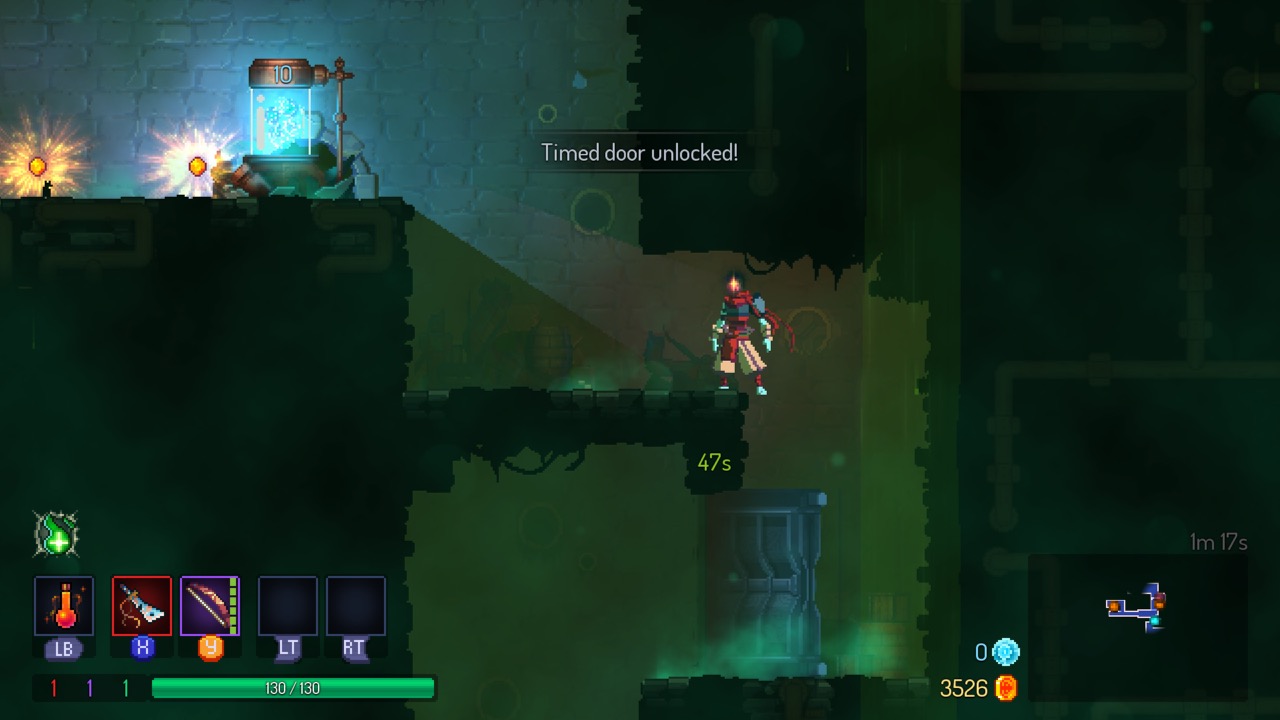Motion Twin has created one of the most memorable indie games of 2018 with their latest release, Dead Cells. It does take certain aspects from previous rogue-likes and Metroidvanias, however, it’s able to add its own flair, thus making a unique and exciting title.

Tough But Rewarding Gameplay
Gameplay is Dead Cells’ greatest feature; it can be difficult yet very rewarding. Death is the most punishing aspect. If players aren’t able to defeat the final boss in one go, they’ll be knocked all the way to the start. Some items and skills can be permanent, so not every run feels tedious or bogged down. When gamers do die, everything earned in that life is lost. It would have helped if it was possible to regain these items in a timely manner, but that could take away from the difficulty of the game and make it too easy. Once gamers are able to understand these mechanics of the game in addition to enemy movements and weapon damage, longer playthroughs are more likely to occur.
Combat feels fast-paced and fluid, which helps to create a more enriching experience. It doesn’t play like a hack-and-slash and isn’t akin to a trial-and-error based title. Instead, it acts more in tune with the Soulsborne series of games. For instance, timing attacks and dodges are key to survival and can result in death if not executed properly. Health also does not regenerate. Although, a potion is present which regains health and can also be refilled in between level sections. Making sure when to use health ultimately becomes a part of the strategy to complete each section.

Alternating Level Design
Level layouts are also completely randomized; there is no telling where shops, weapons, or exits are from the beginning. This helps to make every life feel unique and helps to eliminate repetition. However, because it is so random, often times players will not have access to certain weapons due to spawning. When this happens, it makes it possible to experiment with various weapons and techniques to help take down each enemy. Ultimately, it results in a more well-rounded approach to gameplay.
Each area has a unique feel and layout while also looking visually appealing. From a castle with a sunset backdrop to the sewers beneath the prison, there is plenty of differentiation to separate each level from the previous one. A rich soundtrack helps bring these to life. Not only this, but there’s so much to explore and take out of each level. Some have underground rooms while others have hidden passageways leading to treasures. The alternating level design is definitely a strong point of the game.

Engaging Experience
An interesting aspect of the game is the challenges that appear during each run. There are doors that can only be opened under a set period of time, rifts that must be completed to earn high-level loot, and brutal curses that can result in immediate death. These challenges can disrupt various runs by throwing a curveball at the player. No matter what, gamers can see them before they happen which make it a gamble on attempting it. Challenges ensure that this is a truly engaging experience with high stakes on the line.
The story is almost non-existent due to the nonlinear nature of Dead Cells. Bits and pieces of the world can be discovered through small pieces of dialogue or interactions with certain items. In a title like this, a narrative campaign is not necessary, so this is a minor issue. Players will come to know that the gameplay is the main selling point here. The small bits of world-building that are present help to make the game much deeper than it already is though.

With its fluid combat and alternating level design, Dead Cells provides an engaging experience that gamers will come to love. It’s one of the best indie games of the year and is sure to be remembered for years to come.
Dead Cells is available August 7 for Xbox One, PlayStation 4, Nintendo Switch, and PC.
- Alternating Level Designs
- Fluid Combat
- Tough but Rewarding Gameplay
- Lack of Narrative
